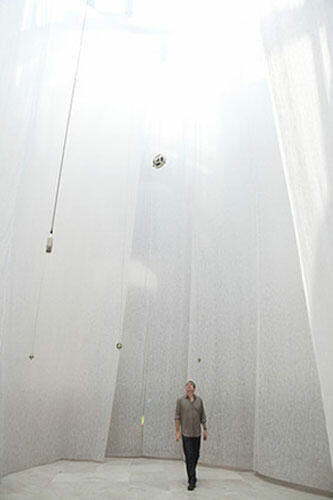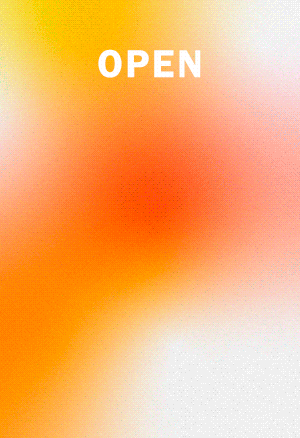Carlito Carvalhosa
MoMA, New York
The atrium of the Museum of Modern Art has been flooded by an ethereal sixty feet high (something over eighteen meters) cascade of a very sheer white fabric, with a slight undulation caused by the airflow and the interaction of the spectators, and more than developing in the space, it seems to try to contain it, fracture it, reinvent it, and at the same time accumulate in it, time. The sum of days.

Soft murmurs, echoes, some eventual shout or chant, flow into the rest of the museum from this double spiral designed by Carlito Carvalhosa. Two “curtains” (one that offers a one-way trip to an open interior and another that defines the exit) of a light, almost non-existent, extremely white polyester fabric, hang from the roof, together with a series of microphones deployed to register the sound of this labyrinth. The stroller, more than the spectator, of the immersive, bewildering, elliptical circuit, may listen, in its interior, to the sound track composed of all the sounds recorded up to that moment. Each day’s recording is superimposed on the one of the day before, so that older sounds are reduced to the quality of a murmur –contributing to the feeling of immersion that is favored by the enveloping white fabric. Thus, the inherent pre formative and participatory aspect of the piece supposes the confrontation among elements of varied nature –which in turn makes one become aware of the surrounding space and of its volume.
This intervention is destined to make us lose all reference, because it does not seem to have an inside and an outside but only a path, a to be and not to be, different sensory sensations arise which in turn favor other more complex, emotional ones. According to Carvalhosa, the diverse experiences of the spectator originate when he/she tries to understand what is happening around him/her, where to walk, how to go on, what he/she is hearing, what is on the other side –if there is, indeed, another side. By not knowing what is going on, one must stop and listen and look more, in an effort to be present. In a present traversed, however, by the accumulation of all that the piece has already witnessed. Without references, one projects oneself on the almost mystical space, thus defining one’s own experience of the installation. (Not by chance has Carvalhosa confessed that he is a Catholic). However, the experience, so eminently fragile, can occasionally fade away in the face of the noise inherent in a museum of such magnitude, influencing the “meditation” proposed by the artist.
Adding another sound track to the installation, weekly performances have been programmed (between September 8 and November 10). On last minute annunciations, we will hear Lisa Bielawa, David Crowell, Jon Gibson, Philip Glass, Carla Kihlstedt, Michael Riesman, Mick Rossi and Andrew Sterman.
Carlito Carvalhosa was born in 1961 in Brazil, where he is one of the most eminent artists of the present time, known for his monumental interventions. This is his first show in a US museum and he arrives there “occupying” subtly but firmly.
-
 © Carlito Carvalhosa
© Carlito Carvalhosa




